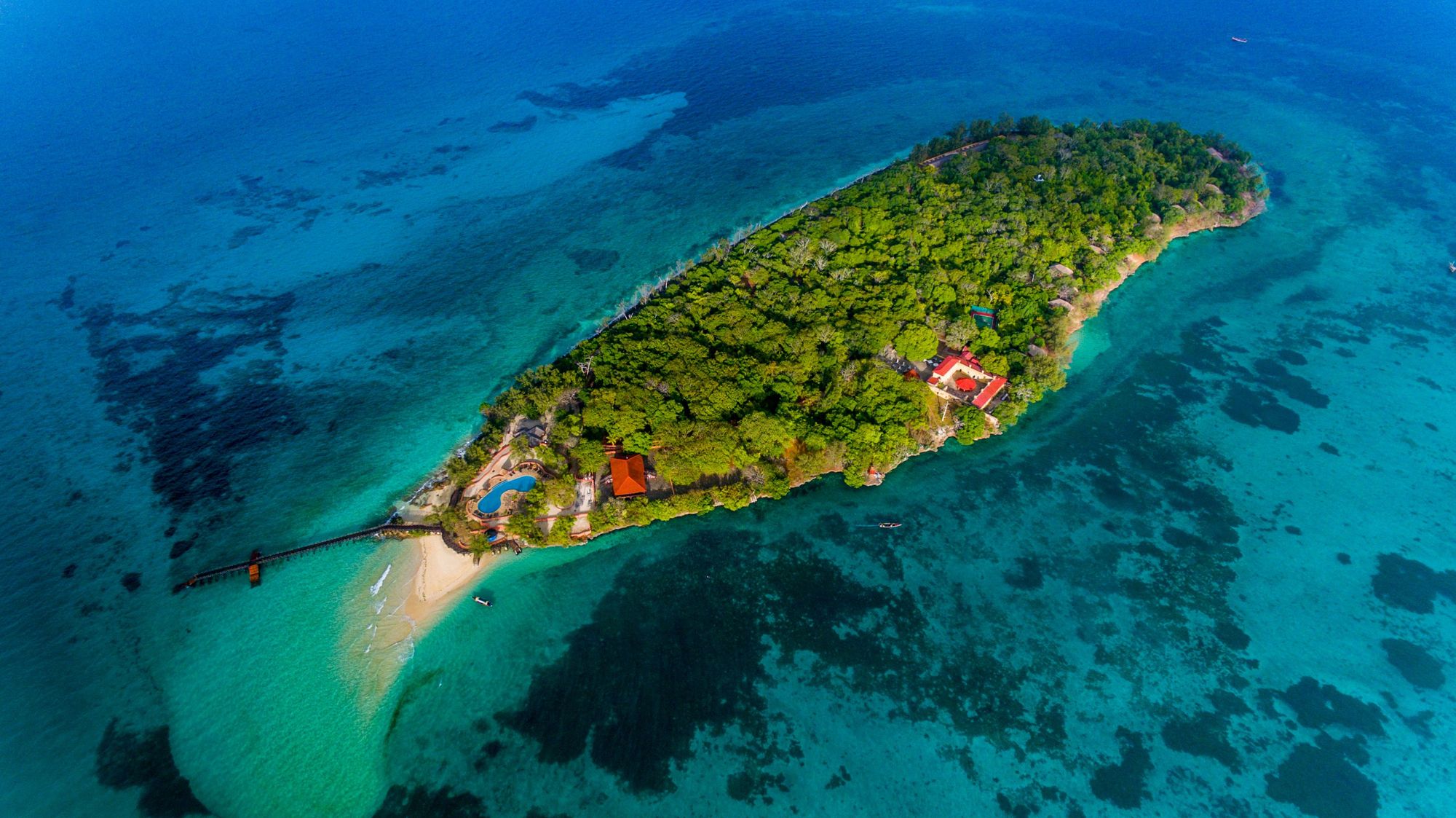Prison Island, just off the coast of Zanzibar in Africa, does not live up to its name. As you approach it by boat, you’ll see a small, low-lying island carpeted in trees. Docking up on the beach, the first thing you’ll notice is how clear and blue the water is - this is an ideal spot for snorkelling.
Upon leaving the beach, you’ll discover a pathway fringed on either side with greenery. After a short walk you’ll reach a building complex - some are red-roofed, with ornate wooden railings and verandas; there's an austere building with thick high walls and faded blue shutters. Upon further inspection, part of the complex is a little worse for wear - plaster has crumbled from the walls, and vines twist their way across the exposed adobe.

There’s a wooden signpost with signs pointing in different directions: ‘Prison Trattoria, 1893’, ‘Prison Boutique’, ‘Tortoise Sanctuary’, they read. You’re standing in an abandoned prison complex which has since become a refuge for giant Aladabra tortoises. This is its story.
The History of Prison Island, Zanzibar
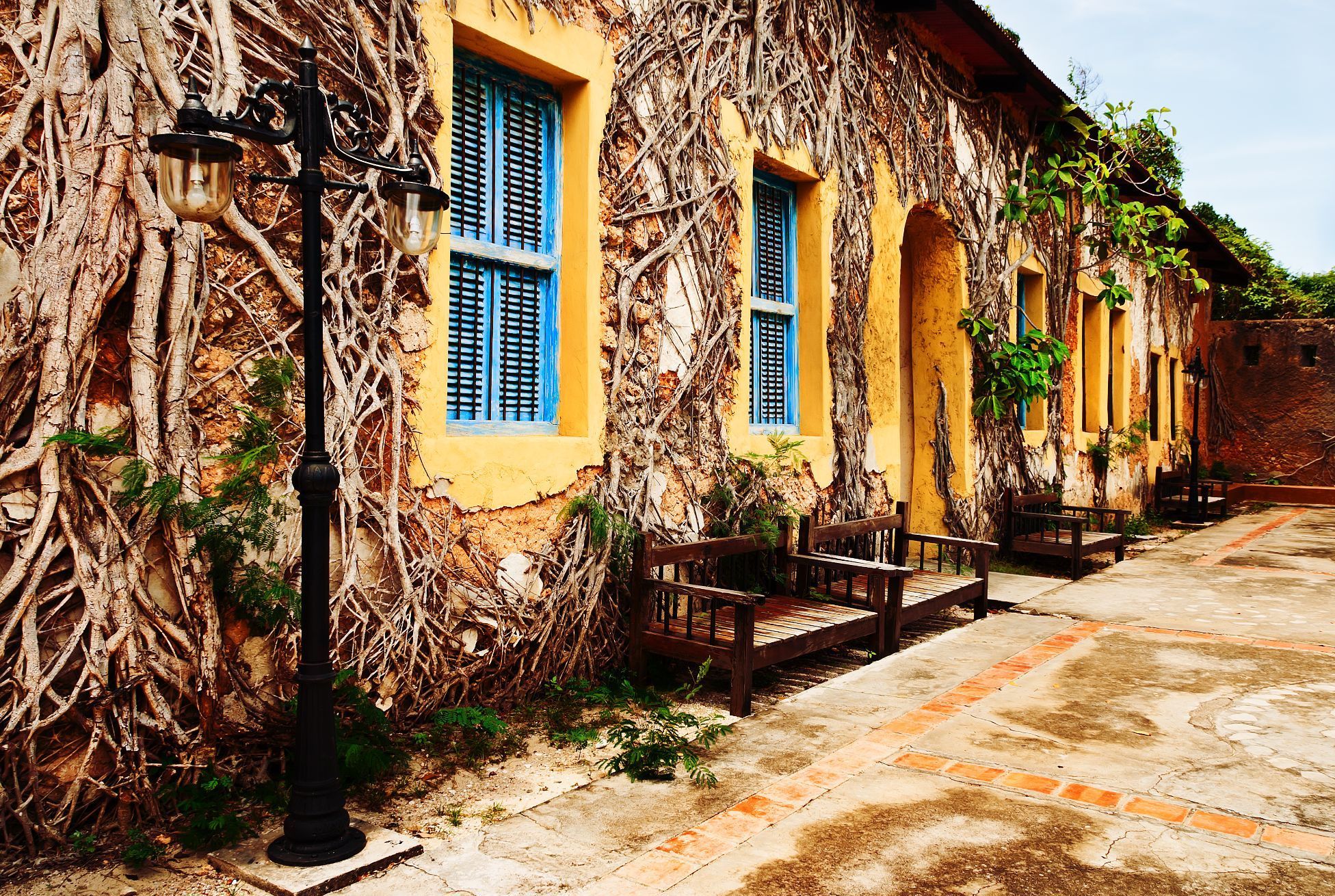
Prison Island - known initially as Changuu Island - was uninhabited until the mid-1860s when Majid bin Salid, the first sultan of Zanzibar, sold it to Arab slave traders. At that time, Zanzibar was at the centre of slave trading in East Africa - the capital, Stone Town, was host to one of the world’s last open slave markets. The traders used Changuu Island as a holding space for slaves in transit to and from Stone Town. Visit Zanzibar's capital today and you'll see museums and monuments to remember this traumatic legacy, including a sculpture of slaves sunken into one of the former cellars of the market.

However by 1873, Sultan Seyyid Barghash signed a treaty that made slavery illegal in Zanzibar - he had done so under great pressure from the British, who had abolished slavery in the UK in 1807. But Zanzibar’s other two main exports - cloves and ivory - allowed the island to flourish commercially. With such abundance, the island began to interest the British, and in 1890 it became a British protectorate. This meant that while it still ruled itself, Britain exercised control over its defence and foreign affairs.
In 1891, The British Consul C. S. Smith visited Stone Town’s prison and was appalled at the squalid conditions and the ‘hot, heavy, foul air’ which made him gag. He suggested that a new prison should be built on Changuu Island. Acting on his recommendation, the British bought the island. They nicknamed it ‘Prison Island’, but progress building the new penal colony was slow. In the interim, European visitors were using the bungalows built for prison staff as a sanatorium, attracted by the sea breezes and pristine environment.
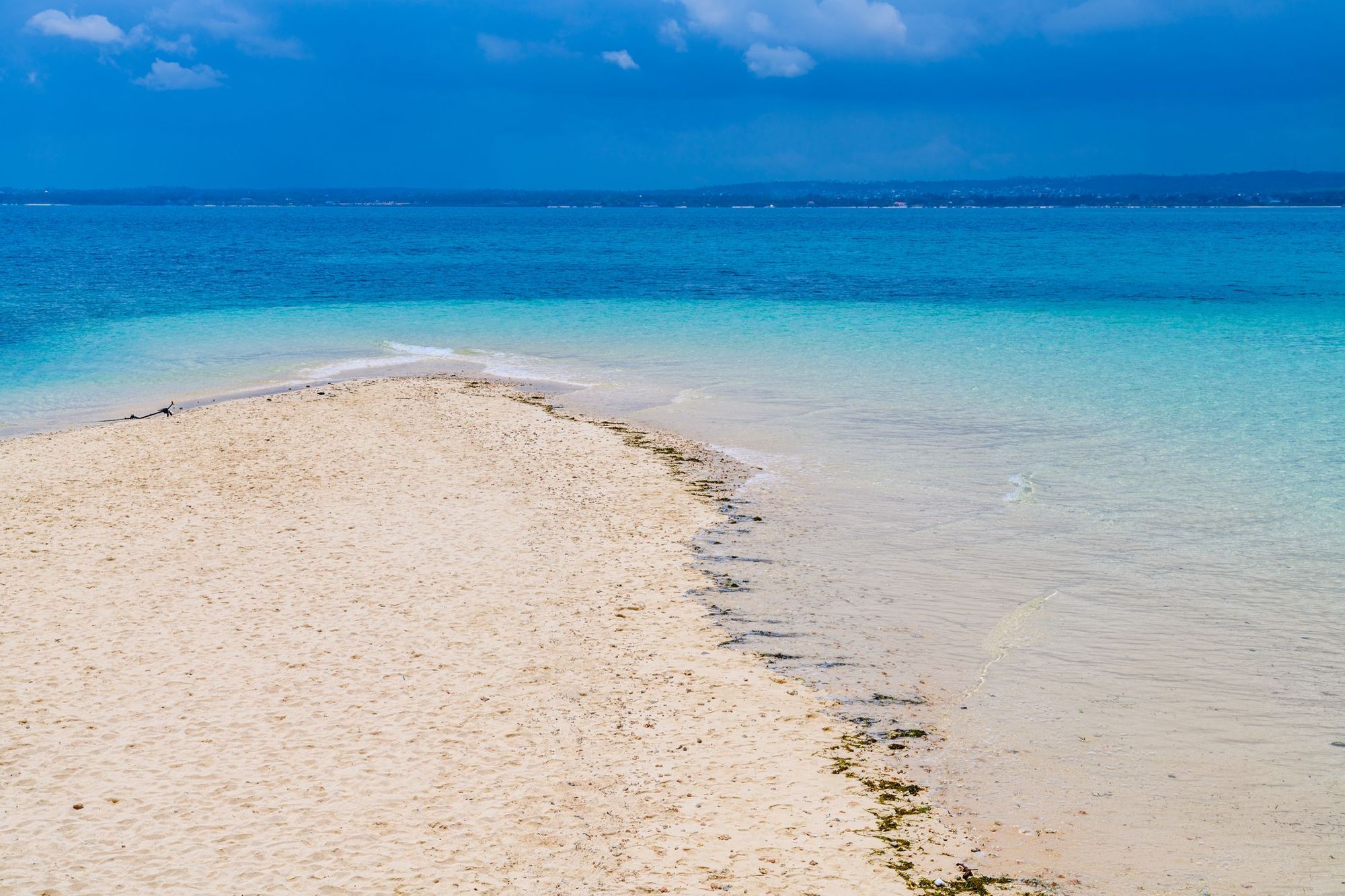
But Prison Island never lived up to its name. By the time it was built, the British were worried about the plagues of cholera, yellow fever and bubonic plague that were ravaging the region. The British authorities, despite the Zanzibar government’s protests, designated Prison Island as East Africa’s main quarantine station. The prison held visitors travelling to Zanzibar for one to two weeks, and also had a medical centre for those exhibiting symptoms of yellow fever.
By the mid-twentieth century, the island was no longer needed as a quarantine station. By then, it had become a popular relaxation spot. Stone Town’s inhabitants relished its quiet beaches after the hubbub of the city; something that continues even to this day. These days there's a resort on the island, complete with ocean-facing swimming pool and sun loungers. You can grab beer and pizza from the former prison restaurant, and eat it on the benches outside the former prison.
The Tortoise Sanctuary on Prison Island
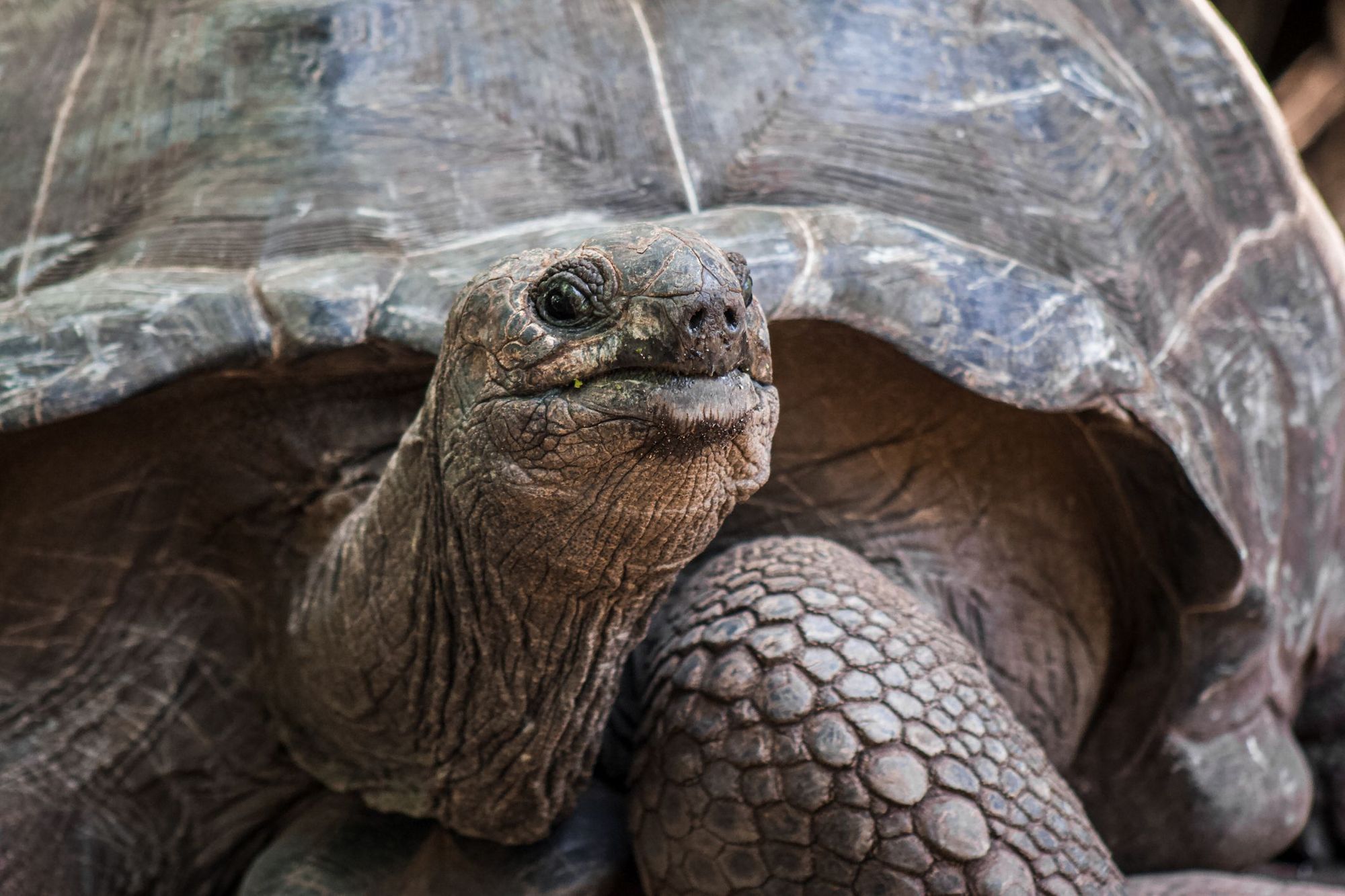
These days, Prison Island is a popular spot for swimming, snorkelling and sunbathing. But it’s also the site of sanctuary for Aldabra tortoises - one of the largest tortoises in the world, weighing up to 200 kilos. They’re also thought to be one of the longest-lived creatures in the world; it’s estimated that the oldest tortoise on Changuu is 196 years old.
Aldabra tortoises are actually endemic to the Aldabra Atoll in the Seychelles - the Governor of the Seychelles gifted four to Zanzibar in the 18th century. The tortoises bred until they numbered around 200. But in the 1960s, numbers began to drop. People were beginning to steal the tortoises to sell for food or as exotic pets. In 1980 there were only 100 fully grown tortoises left; by 1996 there were only seven.
It’s estimated that the oldest tortoise on Changuu is 196 years old.
With the tortoise species on the 'vulnerable' list, the government knew it had to act. That year, 80 hatchlings were moved to Prison Island for protection. The island's geographical isolation had a new function - instead of being a place of exile, it became a sanctuary.
The Aldabra tortoises are housed in a compound surrounded by trees, munching lettuce and cabbage in the dappled light. They sleep in the shade and cool off in muddy puddles. At the moment, there are around 100 tortoises of different ages and sizes living on the island, alongside a few peacocks. Visitors to the sanctuary can interact with these amazing creatures.
How to Get to Prison Island, Zanzibar
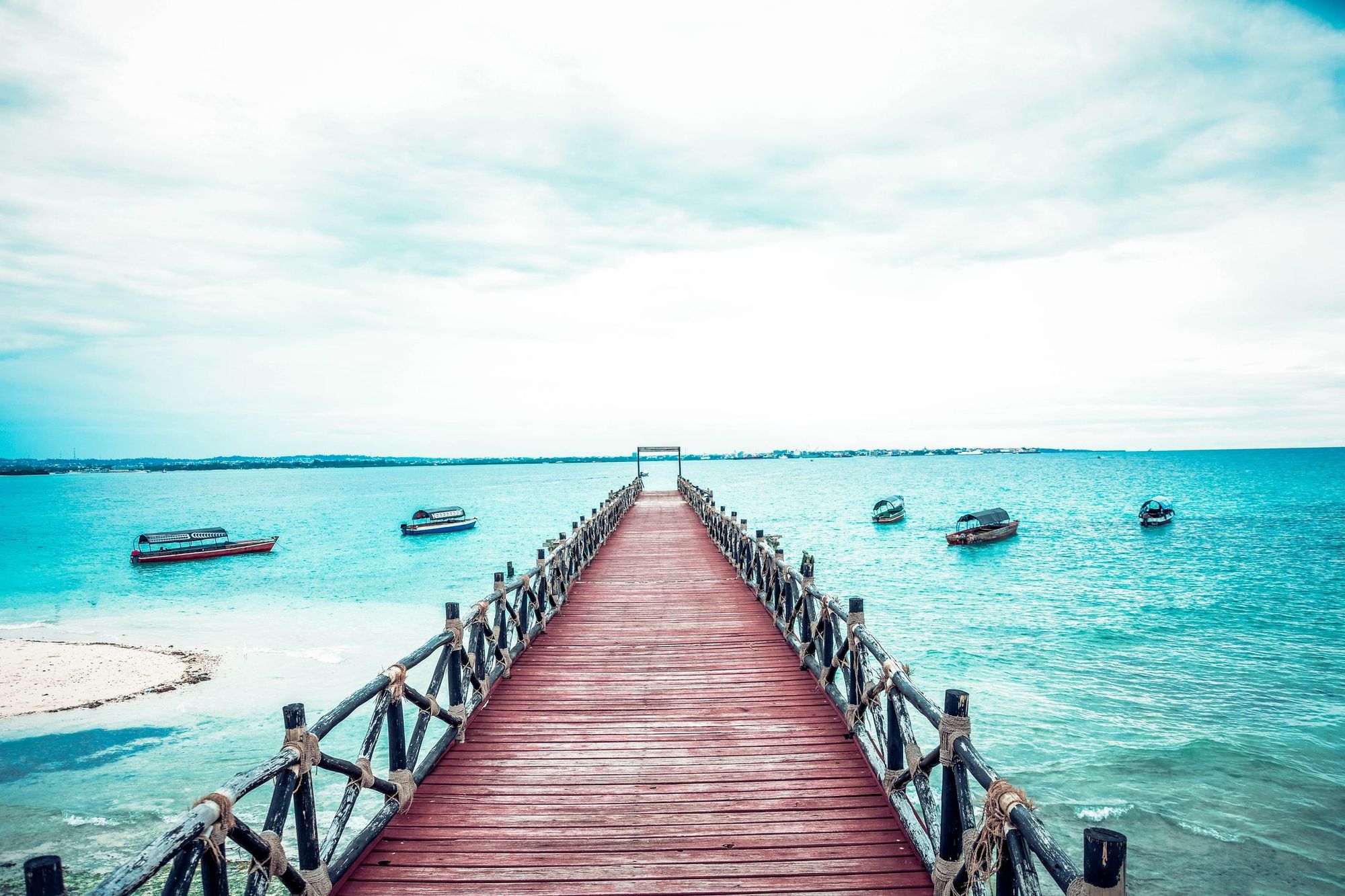
Prison Island is located around 3.5 miles northwest of Stone Town, which means it’s accessible by boat. The trip takes around 30 minutes and be warned, it can get a little choppy.
There’s no public ferry. If you’re travelling independently, you’ll need to take a motorised dhow - a traditional sailing boat with a long narrow hull - from Stone Town’s harbour. The price for this is negotiable - the more people you have on the boat, the cheaper per person it’s likely to be. You can also visit Prison Island as part of a larger adventure (this often includes sanctuary entrance fees and snorkel gear).
Feeling inspired? Check out our Climb Kilimanjaro (5,895m) via the Machame Route and Go to Zanzibar Adventure.


